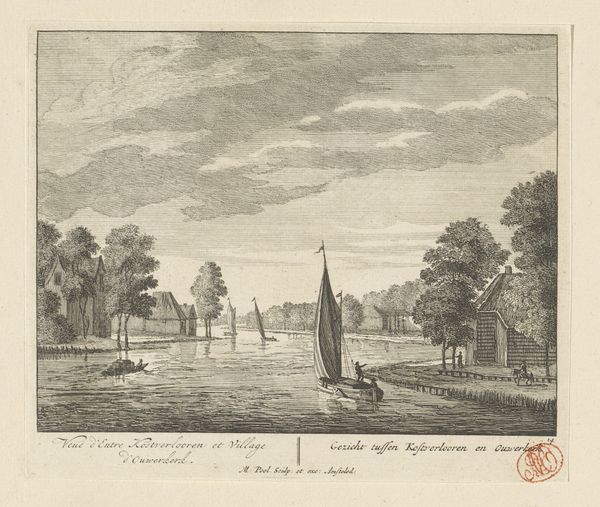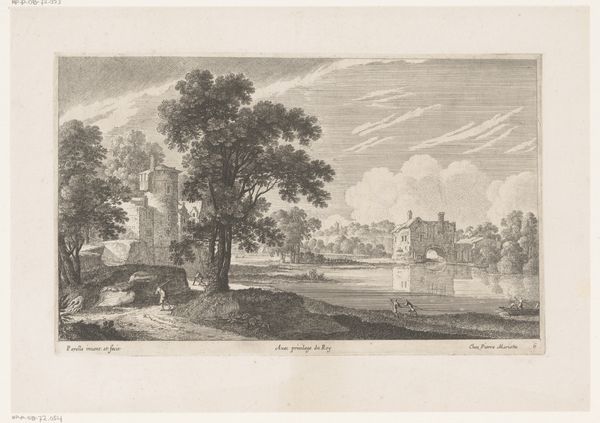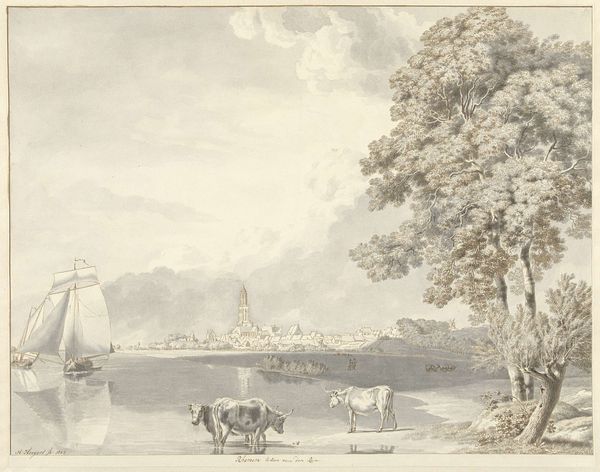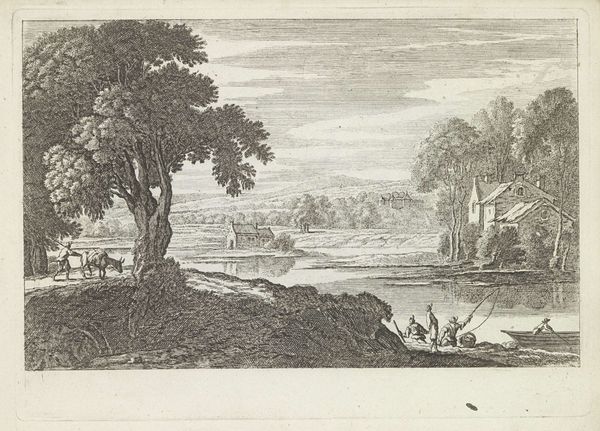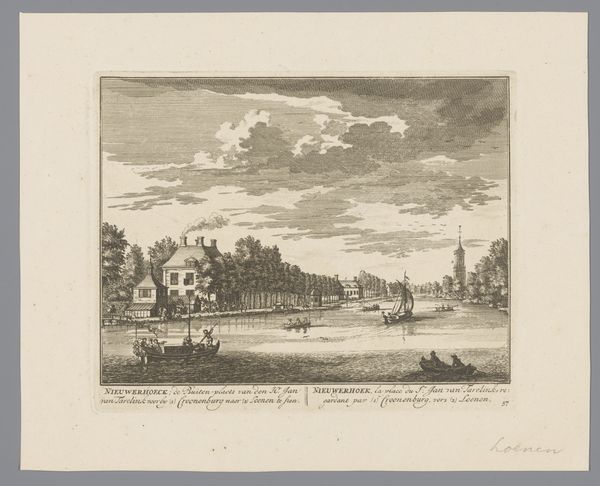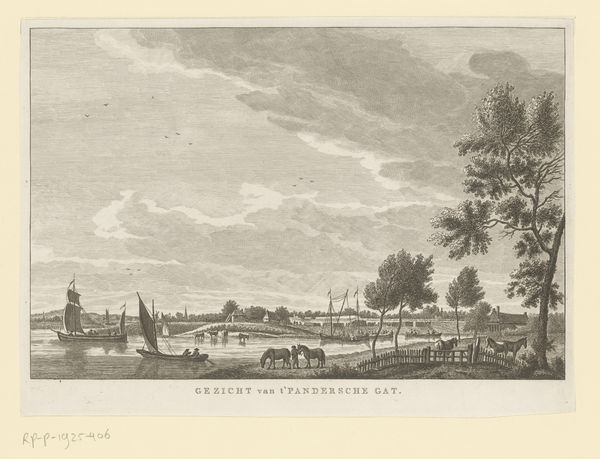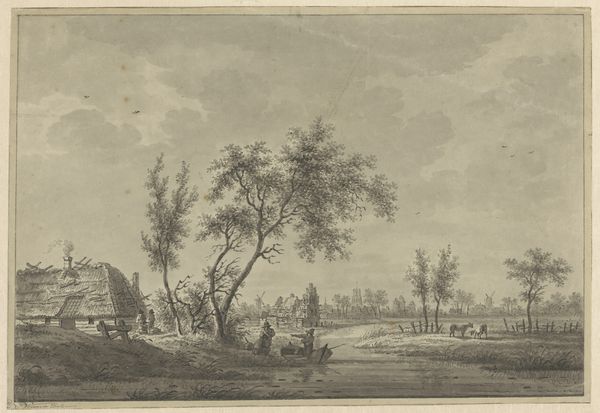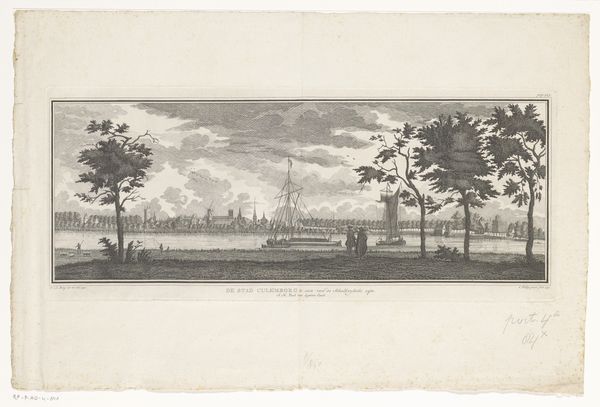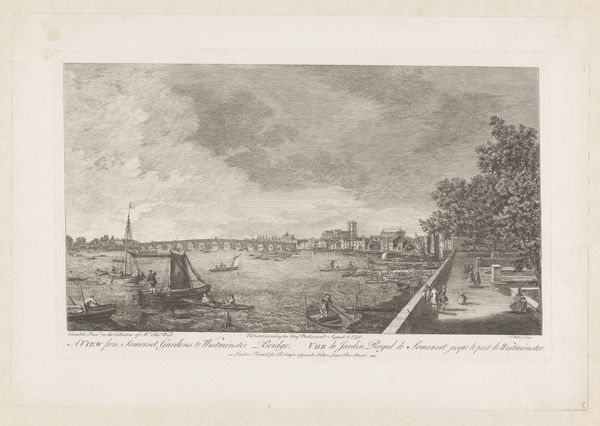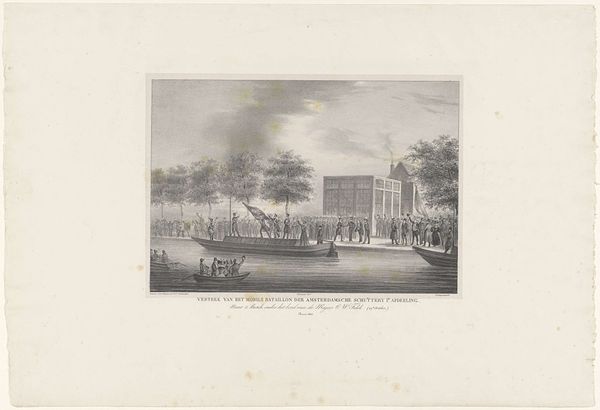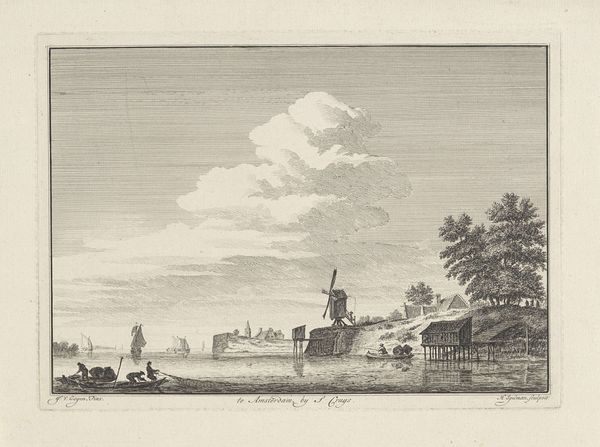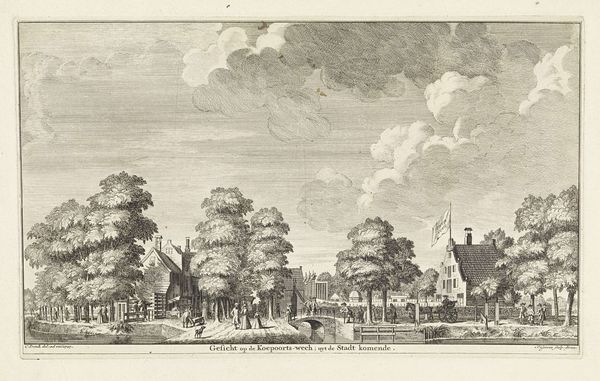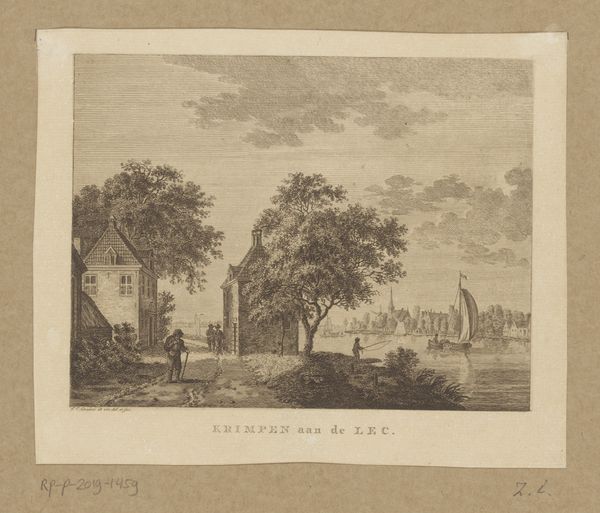
print, engraving
#
dutch-golden-age
# print
#
landscape
#
cityscape
#
engraving
Dimensions: height 280 mm, width 394 mm
Copyright: Rijks Museum: Open Domain
Curator: This is Paulus van Liender's "Gezicht op de bevroren Amstel te Amsterdam," an engraving likely created between 1762 and 1805. What strikes you initially about it? Editor: A pervasive sense of playful energy amidst the chill. I see a lot of implicit symbols pointing to abundance. There is the obvious display of winter activity but, also, an implied symbol for the Dutch Golden Age prosperity through the activity on the ice. The frozen river as a space for gathering is rather fascinating. Curator: The work really gives us insight into the production processes available to Dutch printmakers during the later half of the 18th century. We see the labor involved in the physical creation, particularly the intricate details achievable through engraving. Consider the number of plates, ink application, and the paper itself. It is really a remarkable medium for distribution of images. Editor: Absolutely. The details are very informative of period elements. The image almost looks like an archive—not just an impression of daily life. The artist has placed familiar iconography for its intended audience to signify “home,” and “nation.” Take for instance, the prominent windmills. Do you find symbolic weight in their forms and locations in the image? Curator: Well, while I respect an exploration of that kind of cultural touchstone, my analysis must attend to what could actually produce meaning in the depicted time. What kinds of papers were common? How was this artist compensated? Considering his role in image creation, and reproduction—and understanding the Dutch print market—these factors shape interpretation. The image's cultural symbols are tied to a robust mercantile context and reflect the power structures in place at the time. Editor: That's a fair point. Still, can't we find common ground in understanding how the image, its inherent symbolism, and material existence are all interconnected aspects of Dutch identity in that era? Regardless of how we reach our interpretation, there's no doubt that van Liender’s piece serves as a potent cultural record. Curator: Certainly, appreciating that material and artistic dimensions are united is useful for comprehending their significance to both artist, audience, and contemporary viewers like us. Editor: It’s incredible to think about the layered narratives packed into this relatively small piece.
Comments
No comments
Be the first to comment and join the conversation on the ultimate creative platform.
